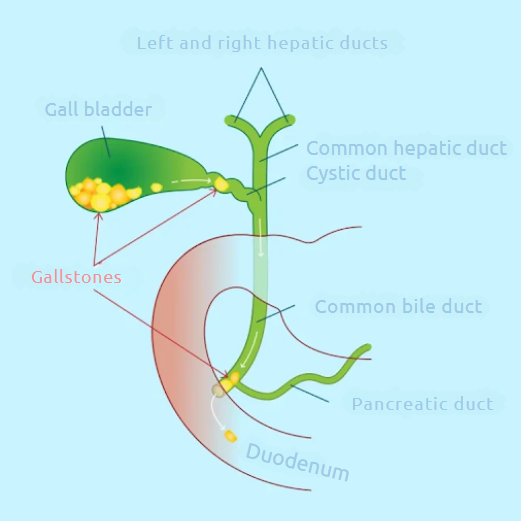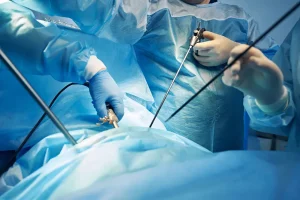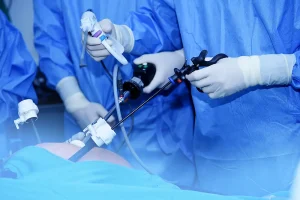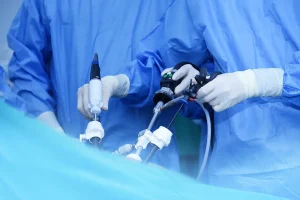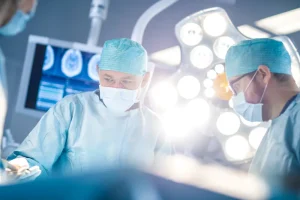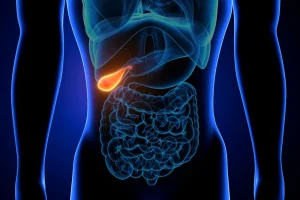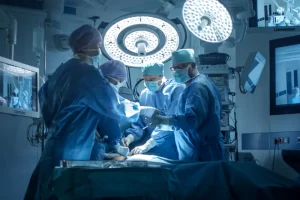Gallbladder Surgery
How the surgery is performed and when it is necessary
Home » General Laparoscopic Surgery » Cholecystectomy
Medical Procedures
Laparoscopic Interventions
Classic Surgical Interventions
Conditions Treated
Abdominal Conditions
- Tumors of the Stomach, Liver, Pancreas
- Intestinal Pathologies
Pelvic and Perineal Conditions
Other Conditions Treated
- Thyroid
- Abdominal Lymphadenectomies
- Esophageal Tumors
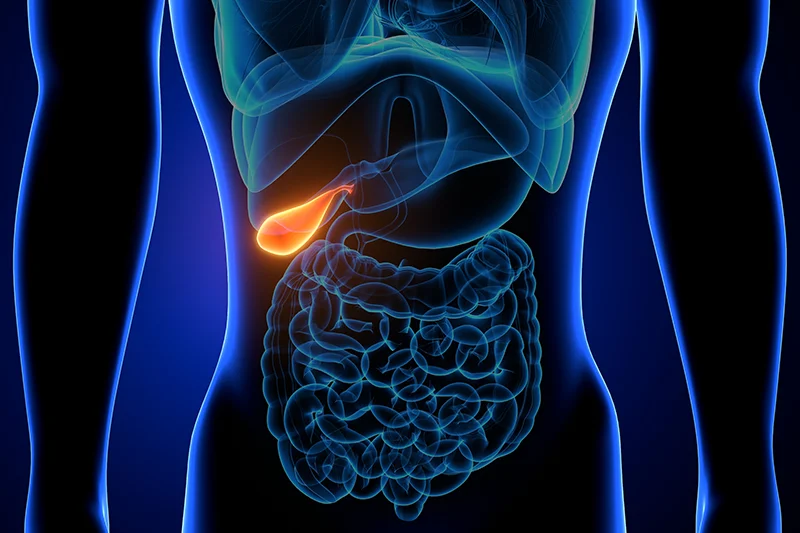
Do you have severe abdominal pain, nausea, or digestive problems after meals? These may be signs that your gallbladder is affecting your health. Gallbladder surgery is a safe and minimally invasive procedure that permanently eliminates problems caused by gallstones or inflammation of the gallbladder.
Find out how the procedure is performed, what its benefits are, and how you can recover quickly to return to a normal life without discomfort!
Book an Appointment
What is a cholecystectomy?
A cholecystectomy is the surgical removal of the gallbladder, a small organ located under the liver that is responsible for storing bile. This procedure is recommended for patients with gallbladder problems that affect digestion and cause constant discomfort.
How long does gallbladder surgery take?
Gallbladder surgery generally takes between 30 and 90 minutes, depending on the type of procedure and the complexity of the case:
- Laparoscopic cholecystectomy (minimally invasive) takes approximately 30-60 minutes. It is the fastest method, with an easy recovery.
- Classic cholecystectomy (open) can take 60-90 minutes or even longer if there are complications such as severe inflammation or adhesions.
After the operation, the patient remains under observation for several hours before being discharged (in the case of the laparoscopic method) or may require a longer hospital stay (1-3 days for the classic method).
Who is eligible for gallbladder surgery?
The main conditions that require gallbladder surgery include:
- Gallstones (stones in the gallbladder) – the accumulation of solid substances in the gallbladder, which can block the flow of bile and cause severe pain.
- Acute or chronic cholecystitis – inflammation of the gallbladder, often caused by stones, which can lead to severe infections.
- Biliary dyskinesia – a dysfunction of the gallbladder that prevents bile from emptying properly into the intestine, causing digestive problems.
- Gallbladder polyps – abnormal growths on the wall of the gallbladder, which can become dangerous over time.
Without treatment, these conditions can lead to complications such as serious infections, jaundice, or even perforation of the gallbladder. Cholecystectomy is the definitive solution for eliminating these problems.
Preparing for gallbladder surgery
Before cholecystectomy, you will need to undergo several tests and analyses to assess your overall health. These include:
- Blood tests (including liver function and coagulation tests).
- Abdominal ultrasound or other imaging tests.
- Consultation with an anesthesiologist to ensure that there are no contraindications for general anesthesia. Your doctor will also recommend that you do not eat or drink anything for 6-8 hours before the procedure.
Gallbladder surgery at the VenArt Clinic
Surgery to remove the gallbladder can be performed using two methods:
Laparoscopic cholecystectomy (laparoscopic gallbladder surgery)
This is the most commonly used method, minimally invasive, performed through 3-4 small incisions in the abdomen. A laparoscope (a miniature video camera) is inserted through one of the incisions, allowing the surgeon to see and operate with precision.
The advantages of this method include rapid recovery, minimal scarring, and a low risk of complications.
Classic (open) cholecystectomy
This is performed through a larger incision in the abdomen and is recommended in complicated cases, such as severe infections or large adhesions. It involves a longer recovery period and greater postoperative discomfort.
In most cases, patients opt for laparoscopic gallbladder surgery because of its many benefits, including reduced post-operative pain and a quick return to normal activities.
Symptoms after gallbladder surgery
After gallbladder surgery (cholecystectomy), it is normal for some symptoms to occur that the patient may experience during the recovery period. These may include:
- Abdominal pain or discomfort: This is common in the first few days after surgery, especially in the area of the incisions. The pain can be managed with painkillers prescribed by your doctor.
- Bloating and gas: Many patients experience a feeling of bloating or gas accumulation in the first few days after surgery. This symptom usually disappears after a few days.
- Mild shoulder pain: Shoulder pain is a common reaction after laparoscopic cholecystectomy, caused by the gas introduced into the abdomen to create space for the surgery. This may persist for a few days.
- Nausea and vomiting: Sometimes, patients may experience nausea in the first few days after surgery, especially as their digestion adjusts to the change in their body.
- Changes in bowel movements: After the gallbladder is removed, some people may experience diarrhea or more frequent bowel movements. These symptoms are usually temporary and disappear after a few weeks.
- Fatigue: It is normal to feel tired in the first few days after surgery as your body recovers.
If these symptoms persist or become severe (e.g., severe pain, fever, jaundice), it is important to contact your doctor as they could be signs of a complication.
Exertion after gallbladder surgery
After cholecystectomy, it is important to avoid strenuous physical activity for a period of time to allow your body to heal properly.
Depending on the type of surgery and how your recovery is progressing, the recommendations are as follows:
- After laparoscopic cholecystectomy (minimally invasive), you will be able to resume light activities within 3-5 days, but it is recommended to avoid strenuous physical activity (lifting weights, intense exercise) for 2-4 weeks.
- After traditional cholecystectomy (open surgery), the recovery period is longer, and avoiding strenuous physical activity is necessary for 4-6 weeks.
During this time, it is essential to listen to your body. If you feel pain or discomfort, stop the activity and allow yourself the time you need to recover completely.
What are the risks of gallbladder surgery?
Like any surgical procedure, cholecystectomy may have minimal risks, such as:
- Infection of the wound or abdominal cavity.
- Damage to the bile ducts, which may require additional surgery.
- Internal bleeding.
- Digestive problems, such as diarrhea or temporary bloating. It is important to follow the postoperative recommendations to minimize these risks.
However, complications are rare, and the benefits of removing the gallbladder outweigh the risks.
Laparoscopic cholecystectomy price
The price of laparoscopic cholecystectomy varies depending on several factors, such as your health and the complexity of the procedure. Before setting a price, consultations and tests are necessary to properly assess your case.
After consulting with a specialist, you will receive a personalized quote that includes all necessary services. Schedule an evaluation and we will provide you with all the information you need.
Why choose Clinica VenArt?
- Experienced medical team – Specialists with years of experience in laparoscopic general surgery, with proven results and numerous positive testimonials.
- Modern technology – We use minimally invasive methods, such as laparoscopic surgery, for a quick recovery and reduced discomfort.
- Personalized approach – Each patient is unique, and the treatment plan is tailored to their needs for a safe and effective medical experience.
- Comprehensive post-operative care – We provide guidance throughout your recovery, careful monitoring, and answer any questions to ensure a complication-free healing process.
Schedule an appointment now!
With the help of an experienced medical team, you will benefit from a safe procedure and a quick, complication-free recovery.
Our specialists will answer all your questions and provide you with a treatment plan tailored to your needs.
Medical Team
Frequently Asked Questions
How long does it take to recover after gallbladder surgery?
Recovery after laparoscopic cholecystectomy is generally quite rapid, and most patients feel well within 7-10 days and can resume light activities. However, it is recommended to avoid strenuous physical activity for 2-4 weeks. In the case of classic (open) cholecystectomy, recovery can take between 4-6 weeks.
Why do we gain weight after gallbladder surgery?
After the gallbladder is removed, the body can no longer store bile, and it is continuously released into the intestine. This can affect fat digestion and cause changes in metabolism. Some people may experience difficulty digesting fats or feel constantly hungry, which can lead to weight gain.
How is the liver affected after gallbladder surgery?
The liver is not directly affected by cholecystectomy, as the gallbladder is only responsible for storing and releasing bile. After its removal, the liver continues to produce bile, but it is no longer stored and is continuously released into the intestine.
Sexual life after gallbladder surgery
In most cases, gallbladder surgery does not have a significant impact on sexual life. After the recovery period (approximately 4-6 weeks), patients can resume sexual activity, but it is important to listen to your body. If there is pain or discomfort, it is recommended to talk to your doctor. Some patients may also experience a temporary decrease in sexual appetite due to pain or postoperative stress, but this improves as recovery progresses.

